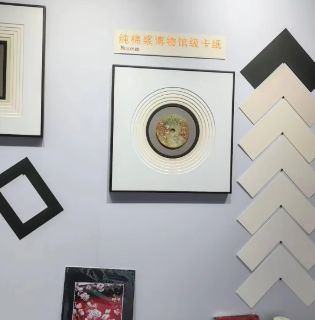Preventing Acid Migration and Fiber Degradation
How Acidic Materials Damage Paper Fibers
Knowing how acidic stuff affects paper fibers matters a lot for people who want to keep their old family letters or museum pieces from falling apart. Paper starts turning yellow and gets all brittle when exposed to acidic conditions over years. Studies show anything with a pH lower than neutral speeds up this whole breakdown process, which means our precious documents won't last nearly as long. The acid doesn't just sit there either—it moves around! It can get into papers through actual contact with things like sticky notes or folders, but sometimes it sneaks in from the air itself too. That's why archivists go nuts about keeping storage areas free from acids. For collectors wanting their heirlooms to survive generations, creating an acid-free space isn't just good practice, it's practically essential if those memories are going to outlive us all.
Long-Term Preservation of Pigments and Textures
If artists want their colors to stay bright and textures to remain intact, they need to work with non-acidic materials. Acid free mounting boards really matter when it comes to keeping artwork looking good after many years, protecting them from both physical damage and chemical breakdown. What makes these boards special is that they won't release harmful acids down the road, something that happens with certain glues or other mounting techniques which sometimes have acid in them. When collectors take care to protect their pieces using proper materials, they stop those precious pigments from fading away and keep all those tiny details in the texture just how the artist intended. This kind of careful handling helps maintain what makes an art collection valuable and visually appealing for generations to come.
Buffering Against Temperature and Humidity Swings
Keeping paper art at a neutral pH level really matters when trying to preserve these delicate pieces. When temperatures and humidity levels jump around too much, they tend to make any existing acidity problems worse over time. Framed artwork especially suffers from these kinds of environmental shifts, which means museum quality framing with acid free backing boards becomes almost mandatory nowadays. These special boards act like shields against sudden changes in climate, helping protect fragile documents and drawings from deterioration. Studies show that if we can keep storage environments stable, paper items might last 40% longer than usual. For collectors and institutions housing important historical documents or rare prints, investing in proper conservation materials isn't just smart it's practically necessary for long term preservation.
Maintaining Structural Integrity in Diverse Conditions
Paper artworks tend to break down when exposed to different environmental factors, which is why museums and conservators insist on acid-free storage solutions. The field of art conservation has long recognized that neutral pH materials help prevent damage over time, keeping pieces looking closer to how they were originally created. Good archival materials need to handle changes in temperature and humidity without reacting badly with the artwork itself. When curators select these proper materials, they're protecting both how the piece looks visually and its actual physical makeup. Some institutions even test materials before implementing them, since even small chemical interactions can cause big problems for delicate works over decades.

Eliminating Harmful Off-Gassing with Odorless Composition
Protecting Artwork in Sealed Environments
When it comes to sealed spaces, keeping artwork safe from materials that off-gas is really important. What's off-gassing? Well, basically it means some materials release these volatile compounds over time, and those compounds can actually damage artwork. Museums and art galleries face this problem all the time since they keep pieces in tightly controlled environments. That's why acid-free mounting boards have become so popular lately. These boards either reduce or completely stop the off-gassing process, giving artwork a much better chance at surviving the years ahead. Studies show that regular old mounting stuff tends to mess up air quality pretty badly, which makes those new acid-free, no-smell alternatives way better for preserving art over decades. When museums block out these harmful gases, they're not just saving paintings today but also ensuring that future visitors get to see them exactly as intended.
Safe for Sensitive Materials and Indoor Air Quality
Artworks made with delicate stuff like pastels or certain types of ink can get damaged pretty easily when exposed to harmful gases released by materials in their surroundings. Keeping spaces free from bad smells isn't just about protecting these precious items either it helps maintain good air quality overall. Museums care about this because people who work there and visitors alike need clean air to breathe safely. Because of these issues, schools and public art spaces have started switching to materials that don't contain acids and don't give off odors. This change serves two purposes at once it keeps valuable artwork intact while improving how fresh the air feels inside buildings. Most museums now consider this kind of approach standard practice rather than something extra.
Enhancing Professional Archival Standards and Resale Value
Compliance with PAT and Museum-Grade Certification
Following proper archival standards matters a lot when it comes to keeping artworks stable and preserved for years to come. The Preservation Advisory Team has set out clear guidelines about what materials should be used. We're talking about things like acid free boards that don't smell bad either. These particular boards have been shown to stop damage from happening over time. Most acid free stuff gets checked against museum quality standards before being sold. This kind of certification does two main things. First, it makes people believe in the methods used to preserve art. Second, collectors tend to trust pieces more when they know proper materials were involved. When artists spend money on certified supplies, their work gains something valuable beyond just looks. There's this underlying assurance that comes with knowing the materials won't ruin the piece later on. And let's face it, galleries and museums look better when they can show customers that their collections are properly maintained.
Boosting Artwork Marketability Through Premium Conservation
Premium conservation materials such as coated acid free mounting boards really help boost how well artworks sell in the market. Potential buyers tend to prefer these options because they keep artwork looking good for much longer periods without damage. Most art conservators agree that going the extra mile with proper conservation methods actually increases the value of pieces, which makes them more appealing both to gallery owners and individual collectors who care about preservation. We've seen auction prices go up quite a bit lately for works where acid free techniques were used throughout, showing clearly that better conservation leads to higher market value. Artists and galleries who take the time to implement these practices will find their work stays visually appealing over years, plus it builds trust among serious buyers in the art world.
Cost-Effective Protection Through Preventive Conservation
Reducing Future Restoration Expenses
Preventive conservation methods like acid-free mounting boards actually save money while protecting artworks from damage. When museums and galleries take these steps seriously, their collections stay much better preserved over time, meaning they won't have to spend thousands later fixing problems that could have been avoided. Some studies show places that focus on prevention first manage to slash their overall conservation costs by around 70 percent compared to those who wait until something goes wrong. The investment in good quality preservation supplies pays off big time because it slows down how fast things break down naturally. Fewer repairs needed means happier donors and visitors too, since everyone wants to see important works of art still looking great many years from now instead of deteriorating before our eyes.
Building Customer Trust with Proactive Preservation
When we provide acid free products, it builds real trust with people who collect art and need those pieces preserved for decades. Our openness about how we take care of artwork helps create better connections with customers, which gets them thinking more seriously about protecting their collections before problems happen. We're all about prevention because that shows we genuinely want to protect what matters to our clients. It's not just about stopping damage either. The whole point is showing that we actually care about building relationships that last years instead of just making a quick sale.
FAQ
What is acid migration?
Acid migration refers to the transfer of acidic compounds from one material to another, which can lead to the deterioration of paper fibers.
Why is maintaining a neutral pH important for artworks?
Neutral pH helps preserve the structural integrity and longevity of paper artworks, protecting them from environmental fluctuations and acidity.
What are off-gassing materials?
Off-gassing materials emit volatile compounds, which can deteriorate artworks, especially in sealed environments like museums and galleries.
How does acid-free certification enhance artwork value?
Acid-free certification verifies the conservation quality of materials, increasing artwork credibility and market value by showcasing superior preservation techniques.
Table of Contents
-
Preventing Acid Migration and Fiber Degradation
- How Acidic Materials Damage Paper Fibers
- Long-Term Preservation of Pigments and Textures
- Buffering Against Temperature and Humidity Swings
- Maintaining Structural Integrity in Diverse Conditions
- Eliminating Harmful Off-Gassing with Odorless Composition
- Protecting Artwork in Sealed Environments
- Safe for Sensitive Materials and Indoor Air Quality
- Enhancing Professional Archival Standards and Resale Value
- Compliance with PAT and Museum-Grade Certification
- Boosting Artwork Marketability Through Premium Conservation
- Cost-Effective Protection Through Preventive Conservation
- Reducing Future Restoration Expenses
- Building Customer Trust with Proactive Preservation
- FAQ

